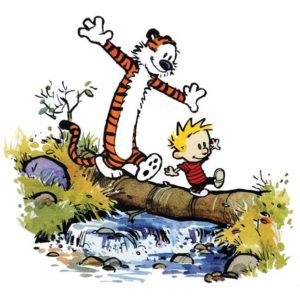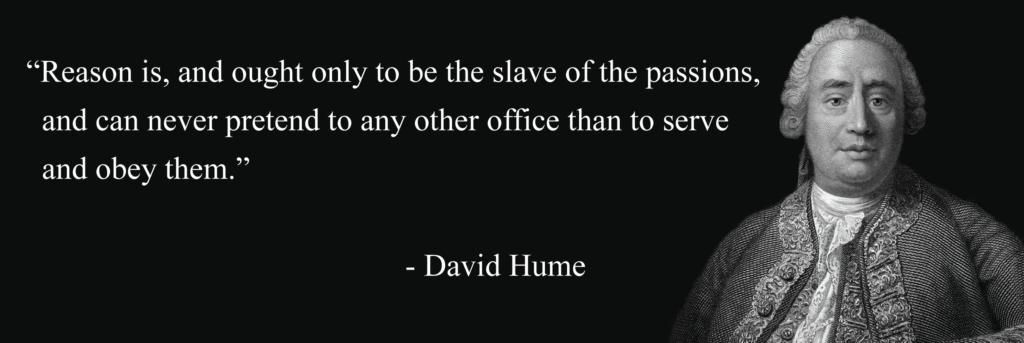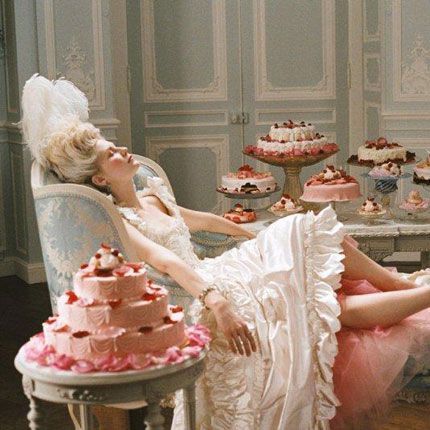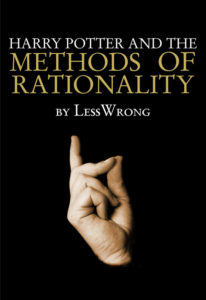While at the Transworld’s Room Escape Conference, I overheard the tail-end of another creator editorializing on an immersive experience he saw, and I heard David Spira (of Room Escape Artist) respond, in perfect meme form, “Less story, more feels.”
Cue light bulb.
All that weekend, I had been harping on the importance of story, as I do whenever I’m around escape room creators—or, you know, it’s breakfast. Story creates stakes, makes memorable moments, guarantees your uniqueness in an industry flooded with look-a-likes—in short, fundamentally elevates the genre of escape room from a forgettable game to a true experience. The best designers and players agree. So it struck my ear like a discordant note to hear story talked of in terms of less after so many hours of everyone begging for more.
But when we say we want story, what is the goal, really? Why do we crave stories? Why do we fill so many of our leisure hours with storytelling experiences—books, theatre, movies, television? There are many reasons we turn to stories, but I think, more than any other reason, we crave emotion. Story is an ideal vehicle for emotion. At the end of the day, we want to feel something.
Grand, SWEEPING pseudo-sociological section
Modern society has erected something of a code: we’re not supposed to feel strong emotion. It’s disruptive, it’s not polite, it’s not “professional.” We’re supposed to smile, not guffaw, say, “Sure thing” when we want to say, “Go to hell.” Even-keel feelings keep the ship afloat, as it were.
Think about whenever you answered someone’s “How are you?” with anything other than “Good, and you?” They’re taken aback, even when you respond positively, because answering that question honestly is against the code. (And if you never have, try it sometime. It’s deliciously subversive.) Woe to the poor server when you tell him you’re not doing well—he literally has no idea what to do next. None of his training prepared him for someone declaring they are having a bad day—we’re supposed to hide that fact. We keep up appearances of a steady ship. Start paying attention to the amount of emotional regulation in the wider world, and you’ll understand a little bit better why we seek outlets for feeling.
This is the Wall we talk about in Meisner acting theory. In the real world, you need a Wall to protect you from responding to people who enrage you, attract you, etc. The Wall says, “Don’t take it personally.” And, outside of acting, Walls are good things. They keep us civilized. They mark the difference between adults and toddlers. Well-regulated emotions mean we’re not breaking out into violence, destroying society, and committing ourselves to “nasty, brutish, and short” lives, so famously described by Hobbes.


We have put emotion under such sharp control that we actively fool ourselves that reason motivates our actions—never emotion. Under no circumstances should anyone act from a place of emotion! To be motivated by emotion is to be a pre-Enlightenment creature, more animal than human, not to be given a place at the table. Or so the lie goes. I’m getting sick of this lie. Can we admit yet that arguments from emotion tend to be more successful? But to assert something closer to the truth—that emotion comes first and the reasoning brain follows in its wake with its many beautiful justifications—is to invite anarchy. Won’t that lead to the End of Democracy and the Fall of Civilization?

To put it simply, we fear emotion. You cannot debate it or fix it. It is too powerful a force. So we do our best to discount emotion, to contain it when in society, and relegate it to the sidelines of our lives.
Story as emotional outlet
But emotion will out. We are feeling beings. We don’t want to be behind our Walls all the time. We can’t. So we seek outlets for feeling in art and stories.
We crave experiences that aren’t even-keel, at the same time that we don’t want to risk anything. Stories fit that need perfectly. We want to feel more love, laughter, joy. We also want emotions on the less-than-sunny spectrum, too: adrenaline, fear, anger, grief, helplessness, power. Really, every emotion is fun to experience when it’s in a safe environment. And entertainment is all about delivering feels. In fact, we choose what kind of story we want by its emotional result. Are you feeling like laughter or tears tonight?

If feelings are indeed so dangerous, imagination is a safe place to experience them. You can “opt in” when you need an emotional hit, and you can also “opt out”—it’s not actually your life. Books can be closed, television turned off, the theatre lights extinguished. Your brain can say “it’s only fiction!” thus making storytelling a safe place to feel. This way we can have our emotions—and our society, too.

Story as emotional practice
It’s noble enough to be an outlet for emotions, but stories serve yet a higher purpose still: practice. Inevitably, emotion will break through in our lives. Society has left us ill-equipped for these moments, and certainly in public, you’ll feel pressured to get back to even-keel as soon as possible, and that’s not healthy. Thanks to stories, we have some idea how to handle extreme emotions. When romance walks through our door, we have already formed ideas about how to love because we’ve practiced it before. When our employer acts unjustly and we rage (directly or just to our friends), we feel confidence in our anger because we’ve experienced this sort of story before.
And grief, the other side of love, will come for all of us some day. We rehearse for that day with stories. Society says, “Don’t cry!” But a good drama says, “Do!” We need to know how to cry—and not to fear it. Opt-in to a good tragedy, and you get carte blanche to let the tears flow. God, that’s really important. Stories give us first-hand experience, bodily memory of emotions sans consequences, better preparing us for the inevitable day when the play-acting time is over, and fiction turns reality.
Perhaps best of all, the emotions stories prompt ultimately teach us empathy, expanding our understanding of who’s allowed in our inner circle of compassion. Emotion is the glue that binds us to characters and compels us to see the story through to the end. We care. When we emerge, we have a stronger sense that everyone has a point of view and so deserves our very best empathy. In fact, experiments in cognitive science have concluded that fiction really does improve our empathy.
World-building for what?
Emotion is the goal. That’s what we want from stories, much, much more than “ideas,” and we should write them with this end-goal in mind.
But sometimes creators get bogged down in the story details too much and can lose sight of why they’re telling a story in the first place. Every story detail needs to have a relationship with the audience. Ask always: why is it there? What work does it do? If you’re only adding detail to make the story seem more realistic, the audience can and will forget the detail. Flood them with irrelevant details, and you train them to tune you out. Make the detail do emotional work, and we’ll start caring.
World-building? So hot right now. Star Wars, Harry Potter, the Marvel Universe, the Hunger Games. We want to enter worlds different from ours and ferret out all the details, learn obscure character names, memorize the lingo. But all of these details aren’t going to interest us if our emotions aren’t captured in the first place. Emotion comes first. World-building is a distant second. We need to love the characters before we become rabid fans and want to learn more about them.
Let’s look at Harry Potter. Anyone who takes that world seriously for five minutes will see all sorts of holes in it. How do wizards handle a world with guns? Do they ever learn math?

Yes, it’s true: Harry Potter’s world doesn’t hold up to reason. But it does hold up to emotion. When I think of the series, I don’t think about the many details, I think of how it provoked my laughter, my tears, my sense of injustice, my sense of wonder. The delivery of so many profound emotions is what makes it popular, not its richly-detailed (and unfeasible) world.
A 400-page, multi-branching immersive script is not a good unto itself. All that says is, “This show is complex.” What I want to know is, does its complexity do emotional work?
Less story, more feels.
Emotions in Escape Rooms
The primacy of emotion also explains why escape rooms, without a whiff of story, are so popular. Anticipation, adrenaline, frustration, joy, a rush of elation if won, the bitter taste of disappointment if lost—they’re perfectly designed for maximum emotional drama.
And they’d be so much better if creators actively designed for it! Do you really want your guests spending the first 15 minutes in frustration, or would you rather give them the elation of progress every 2-3 minutes? And are you sure you want to deliver bitter disappointment for even 25% of your paying customers? And if, yes, you still do want players to lose because you think that’s what escape rooms are about, be sure the game’s NEVER BROKEN and FAIR AS HECK—otherwise they will redirect their negative emotions onto you, the designer. They’ll probably still do that, actually, but at least you can sleep easy at night…?
I’d also argue that escape room emotions would be much stronger, more memorable when tied to a story, but I have to admit, even the worst escape room is more successful in the gamut of emotions than some theatre I know.
But the “story” often at the beginning of escape rooms—that wall of text delivered by the game master—does zero emotional work. It’s a prime example of world-building without the goal of emotion in mind. They’re trying to make the game feel more realistic, but realism is not why we tell—or remember—stories. The stories driving The Vanishing Act, The Maze of Haikana, and The Jazz Parlor (some of my favorites) I remember as well as if I played yesterday, because the stories engaged my emotions. These were not stories for story’s sake, but story deployed for emotional effect. Let’s just say it’s not a coincidence that these are top experiences.
emotion in immersives
As I’ve covered in other posts, I consider immersives more powerful than other forms of story-telling. Immersives locate you, body and soul, inside a story. There is less imaginative work needed on your part; you cannot easily “check out.” In response to this immediacy, the emotions the audience experiences can be overwhelming, unpredictable, dangerous. That’s why immersives so often have strict rules, content advisories, and black masks dedicated to everyone’s safety.
Immersives are fucking SCARY. I’m just saying. They’re not safe in the way books and movies and plays are. You leave with a bodily memory you can’t erase. And you definitely want to know if you’re walking into a show that’s dedicated to tearing you down instead of building you up, or you might just leave with some new psychological scars. Think of it this way: I can watch Schindler’s List, but I would not be able to attend a Holocaust immersive.
This is one reason why I love immersives, that element of un-safety, but that makes it all the more important to wield the power consciously.
I want all creators to write for emotion, but I implore it of immersive authors: please, write with the audience’s emotions foremost in mind. They’re not at a distance in the dark, but in your cast’s lap. You do not want to leave their reactions to chance. Ask always, how will this or that design decision elicit an emotion? You’ve chosen to tell your story in a form that is more visceral for the audience than others. Make sure that’s a good thing.
We try our best to design emotion-first at Strange Bird Immersive. We like to use a five-act structure and map out the emotions within each of those stages. Characters have emotional arcs, and audiences should journey with an arc, too. When making design decisions, we prototype as close to the real thing as much as possible, and see how our gut responds to the experience. Just recently we were wrestling with a design choice and opted for the prototype that didn’t provoke fear, as fear was an undesirable emotion for that moment in the experience. We nix choices and details that are only “funny to the GM”—the players have to be in on the joke.
Why you need to play/attend
Emotion is a powerful learning tool, and that’s why I advocate for every designer to be an enthusiast in their genre. Playing transforms dry theory into personal memory.
Players all say free-roaming blacklights are lame, but escape room designers don’t universally listen. But when you play yourself, you’ll never forget the rage you felt being relegated to “blacklight search duty” for 15 minutes while your teammates discovered cool things without you. Miss a game’s most amazing reveal? You’ll be more likely to bottleneck your own reveals. You may want to design a room with low-light—you want atmosphere! It makes no sense for this space to have good lighting! And that sounds like a convincing argument in a design meeting. But when you play such a game, how did it make you feel? Did it add to your wonder or increase your frustration? Only if you play, and play a lot, can you increase your ability to design player-first.
Same rule goes for immersive theatre. Ever attended an immersive where you missed the story? Or were uncertain about the rules? Or came back a second time and got stuck on two-thirds of the same track you saw your first time? That happened to Cameron at Then She Fell, and now we’re passionate advocates for dark rides to sell tickets for specific tracks (just don’t tell us where the tracks go).
Attend. Feel. Learn. Repeat.
SUBTLETY, or “don’t be like a haunted house”
Now that you’re focused on emotion in your design, be sure not to go too far! People hate it when they sense their emotions are being manipulated. That’s why we speak of tear-jerkers and Hallmark movies so disparagingly: they’re blatant. Keep things subtle. You might have an ideal emotional response at every moment mapped out, but you can’t be obvious about it.
Rule of thumb: don’t be like a haunted house.

By which I mean a standard, run-of-the-mill haunt, not the cool immersive haunts currently trending in cool cities. A standard haunted house wants to SCARE you. That’s it. And they’re blatantly manipulative about it. An actor jumps out at you, he has no backstory, we don’t know what he wants—other than to scare you! The experience is binary: you’re either scared, or you’re not. And they so desperately want you to be scared. They’re leaning into it strongly. The result: a bunch of people who rebel against the design. We want to keep the audience with us, not against us, and that requires subtlety.
Start by focusing on characters instead of the audience (be sure to read my thought-piece When You’re the Star…). You’ll want concrete characters with distinct points of view, who will then draw the audience into emotional relationships. We really like it best when the spotlight isn’t on us. Make sure your characters are experiencing emotions, ideally an arc, but be especially sure they aren’t unconcerned or unfeeling. Automatons make for really boring immersives.
Spaces, too, can be designed for emotions, but be sure to create believable rooms, rooms with nuances to discover or many layers of meaning, and not a room that immediately reads as Scary Room. That will prompt more laughter than fear. When you show your cards, you lose your power.
And you definitely will need details. I’m far from being against details—I’m just against details deployed in a vacuum. They need to be part of the larger goal. Details help make a world realistic, so that the emotions provoked don’t feel forced but rather blossom organically. If spaces don’t have a logic or characters don’t feel properly motivated, the audience won’t get involved.
Make sure, too, that your actors train for a range of reactions. No matter how consciously you design, you cannot predict everyone’s response—and perhaps that’s a good thing. Let the story do its work, and make sure the actors don’t get expectant. If at a key moment, you look too eagerly at the audience for their emotional response, many of them will defy you.

Be sure to let the audience initiate relation at these moments, especially if you’re working with tears. Sharing tears is a sacred act. Remember always that your guests are coming from a world where they’re not supposed to cry. Don’t take it lightly.
Keep the designer’s hand invisible, and you may just create something that really moves someone. For me, I can think of no greater goal.
But what about IDEAS?
Stories are also excellent vehicles for ideas (aka “theme”), and at least according to English class, this is the nobler goal of stories (stopping at emotion means you’re relegated to the “just entertainment” category). And while I count it a very high honor to have stirred audience emotion, Strange Bird does have Something To Say (TM) with The Man From Beyond, and the core idea in our next production is so radical, it frightens me. We’re chasing after individual transformation, too. All lovely, important goals. But a purely-intellectual vehicle, however, really won’t get your ideas very far. Arguments from emotion? It’s time to admit, they work better. Move me first, and maybe my ideas will budge.

